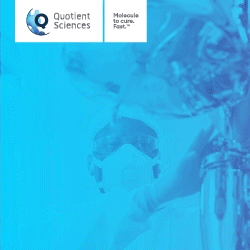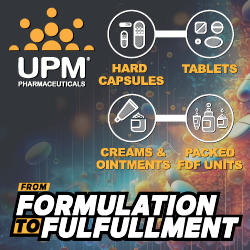Issue:May 2014
CLINICAL DEVELOPMENT STRATEGIES - Optimizing a Full-Package Strategic Alliance for Clinical Development Services
INTRODUCTION
Pharmaceutical and biopharmaceutical companies are confronting a fundamental productivity challenge. In the past two decades, R&D cost has increased significantly, yet the rate of innovation is diminishing and so is the success rate of new drugs launched in the global market. Figure 1 illustrates annual R&D spending versus new drug approvals. In addition, revenues of these companies are at risk due to current and expected patent expirations. Figure 2 illustrates the pharmaceutical industry sales at risk from patent expirations.
Analyzing the operating model of a pharmaceutical company in the late1980s reveals a fundamental error – “too much ownership” – of non-core activities within the internal operations for the drug discovery and development process. This in turn was diluting efforts toward innovation and efficiencies (ie, against the concept of core competency).
To overcome this situation and burnout effect caused due to under productivity, pharmaceutical and biopharmaceutical companies have been embracing the path of externalization; by converting their fixed costs into variable costs.
However, with increasing prevalence of outsourcing in the past decade, many sponsors have adopted the path of full-package strategic alliances (umbrella deals) with leading global CROs, most of which are falling short of their desired results.
Some of the major reasons for the failure of these full-package strategic alliances can be attributed to the following factors:
· Lack of proactive assessment of synergies across categories and functionalities and identifying the optimal level of externalization across clinical development services.
· Inefficient competency assessment in the course of vendor selection process (ie, mapping vendor’s core competencies).
· Alliance implementation & scale-up challenges.
The following discusses these challenges, which are critical gaps to be addressed by the next-generation of clinical development category managers, specifically, deciding the optimal level of externalization rate across clinical development categories to improve operational efficiencies and flexibility, and identifying the potential vendors and the scope of engagement (functional and/or multi-functional), while leveraging their functional core competencies and inter-functional synergies to ensure best-in-class quality, innovation, and efficiency.
EXTERNALIZATION OF CLINICAL DEVELOPMENT SERVICES
In the past 10 years, the level of externalization by large pharmaceutical and biopharmaceutical sponsors has increased from 15% to 20% to 40% to 60% across clinical development services. This is primarily driven by increasing cost pressure following the patent cliff to supplement capacity and expertise required to fuel innovation into their R&D operations.
Clinical development in general involves a large number of distinctive services. Some services are highly human skill oriented (eg, clinical monitoring, biostatistics, CDM, investigation, etc), while some require high-end equipment and processes as enablers (eg, sample archiving, central lab, etc). At the same time, some services like site management, patient recruitment, etc demand intense networking in the industry to ensure global-scale clinical trial operations.
Today, external vendors like full-service CROs, and functional service providers like SMOs, PROs, AROs, and niche vendors are playing an integral part in bridging this gap of innovation with cost efficiencies and operational flexibility, across clinical development operations for large pharmaceutical and biopharmaceutical sponsors.
In the drug discovery and development (D&D) value chain, the clinical development category is one of the critical operations in terms of spend (cost of operation), time, and innovation. At present, more than 50% of the clinical development operation for global sponsors is being managed by these external vendors.1-4
ALLIANCE STRUCTURE: TRANSITION FROM COST-FOCUSED TO VALUE-FOCUSED PARTNERSHIP
With time, the client-vendor relationship has undergone restructuring from ad-hoc contracts to preferred relationships on both sides for global alliances mainly focused on the regional or disease-specific clinical development requirements of the sponsor. As the vendors, especially functional and full-service CROs, are increasing their array of competencies to bridge the innovation gap; sponsors are placing increased emphasis on managing alliances with preferred vendors that provide competitive advantage with greater scale and efficiency. Figure 3 illustrates the pharma-CRO alliance structure and transition from a cost-focused to value-focused partnership.

CURRENT SUPPLY MARKET FOR CLINICAL DEVELOPMENT SERVICES & ITS CHALLENGES
In the past 2 years, the supply market for clinical development has witnessed a great deal of consolidation, especially from the global full-service CRO front. The acquisitions and collaborations among six large well-known CROs in the outsourcing world and recent IPO for the largest CRO show that investors still find the CRO market to be attractive, especially in the US, for future investments. Other examples include privatization and consolidation of mid-size CROs.
By providing a complete portfolio of drug development services from discovery through commercialization, under a multifunctional strategic alliance relationship, global full-service CROs are expected to take on much of the operating risk and provide most of the execution and project management resources. Also, the globalization of clinical trials and the ever-increasing dependency of sponsors have raised new operational challenges for full-service CROs, such as their declining productivity, while thespending associated with clinical trials is increasing:
· The productivity across the CRO industry has dropped more than 70% over the past decade.5,6
· In the CRO industry, overall spending was about $11.5 billion in 2010 and is estimated to exceed $20 billion by 2017.7
Inefficiencies across high-spend categories and pressure for global capacity expansion include:
· Over capacity in certain preclinical areas has reached 20% to25%. For example, toxicology services in particular have seen significant facility closures and price discounting.
· Even the cost of conducting clinical trials in emerging countries is increasing more rapidly compared to developed regions like the US and EU. For example, the average annual increase in cost per patient in Phase II-III: LA = 17%, Eastern EU = 12%, Asia = 11%, Western EU =9%, and US = 6%).
· The overhead rates are one of the major issues for many CROs managing clinical studies. About 25% to 30% in some categories and in countries like the UK, it may be up to 30% to 40%.
· Medical innovation, financial consideration, and study-specific complexities as well as stringent regulations like standard of care (SoC) for patients/subjects coverage are some of the major challenges associated with globalization of clinical trials.
SUBCONTRACTING RISK WITH FULL-PACKAGE ALLIANCE DEALS
Due to the resource crunch in the global clinical trial market, global full-service CROs are compelled to subcontract some of their operations (services not aligned to their core expertise) to organizations who have functional and local expertise for such services as clinical trial call centers, patient recruitment, clinical supply management, clinical staffing, etc mainly to ensure patient enrollment, avoid fixed costs, and mitigating operational challenges in emerging markets like China, Africa, Latin America, and Southeast Asia.
Subcontracting a clinical trial by a CRO may fragment the clinical trial-related assignment further and can lead to a lack of comprehension about the entire trial process (ie, lack of supply chain visibility). Recently, global regulatory authorities like FDA, EMA have raised concerns about the violation of global regulatory and quality compliances (like GCP/cGCP, GMP, GDP, SoC, etc.,) due to subcontracting in the Pharmaceutical industry.
FUTURE SOURCING OPTIONS FOR CLINICAL DEVELOPMENT SERVICES
Identifying Synergies for Functional Integration & Leveraging Core Competency
Most of the global pharmaceutical and biopharmaceutical sponsors are considering the core competency assessment of their external vendors as one of the critical first steps in developing an effective outsourcing strategy. A maturing vendor base and increasing adoption of technological platforms is expected to provide operational synergies and scope of integration across specific clinical development service categories. Figure 4 illustrates possible synergies and scope of integration across functionalities and categories.
Key Sourcing Considerations
In order to optimize and leverage the these synergies across the clinical development functionalities and categories, global pharmaceutical and biopharmaceutical sponsors need to analyze their current internal category scope and subsequently streamline their sourcing practices by rationalizing their current vendor base (Table 1):
– Internal Category Alignment (Vertical Scope of Integration): Analyzing and redefining current category scope of operations and rationalizing it by evaluating the level of integrations with other categories of functionality.
– Vendor Base Rationalization (Horizontal Scope of Integration): Assessing the core competencies of the current vendor base through robust KPIs across each category/function, and evaluating the scope of integrated sourcing approach to leverage the synergy across functionalities.
Figure 5 illustrates horizontal scope of integration with an example of core competency mapping for vendors evaluation across CDM and monitoring category services.
SUMMARY
To ensure a successful externalization execution path while mitigating these challenges, global pharmaceutical and biopharmaceutical sponsors should continuously evaluate and restructure the way they engage with these external vendors by identifying the synergies, understanding the sourcing best practices, analyzing the governance or alliance scale-up risks, and devising the risk mitigation strategy over the lifetime of these contracts.
In near future, the clinical development service market is expected to witness further rationalization, which should distinguish the current supply base into core service providers (Phase I-IV clinical trials) and single or multiple functional support service providers (clinical data management, central laboratory, clinical staffing or in-sourcing, patient recruitment, etc) for clinical trial operations across therapeutic areas and geographic scope.
With the maturity of the supply market driven by these rationalizations, global pharmaceutical and biopharmaceutical sponsors should proactively revive their current category sourcing strategy by undertaking an internal category alignment and vendor base rationalization. This would enable them to bridge the gap of innovation and enhance future productivity by optimizing their externalization process for clinical development services.
REFERENCES
1. Christine Pierre. Industry’s Opportunity for True Site Partnerships. Pharmaceutical Outsourcing. May 28, 2013.
2. Gareth Macdonald. Quintiles Confirms Go Public Speculation with IPO and Predicts Rosy Future for CROs Outsourcing – Pharma.com. Feb 18, 2013.
3. Peter Mansell. CROs and clients are on different pages over market direction, EIU finds. January 19, 2012.
4. Paraxel Source book 2013/14.
5. Jeff Hewitt, J. David Campbell, Jerry Cacciotti. Beyond the shadow of a drought: the need for a new mindset in pharma R&D. Oliver Wyman analysis, 2011.
6. Deloittee, Global life sciences outlook: Optimism tempered by reality in a “new normal”. Sep 1, 2012.
7. Harold Grass, PhD. The Annual State of Clinical Development Cost. 2nd Annual State of Clinical Development Cost Conference in Philadelphia. January 10, 2012.
To view this issue and all back issues online, please visit www.drug-dev.com.

Kamaljit Behera is a Team Lead with Beroe Inc., a global provider of customized procurement services specializing in sourcing, supply chain visibility, financial risk analysis and environmental impact to Fortune 500 organizations. Kamaljit specializes in tracking various sourcing categories for Pharmaceutical and Biopharmaceutical companies and has 3 years of expertise in undertaking cost-benefit analysis, supply market analysis, innovation-value analysis, sourcing best practices, and spend analysis. He has worked on multiple projects for many Fortune 500 clients involving categories such as Central and Core Laboratory, Animal Sourcing, Clinical Staffing, Clinical Trial Site Management, Patient Recruitment, and Post Marketing Services Categories. Kamaljit earned his degree in Master of Business Administration from the Christ University- Bangalore.
Total Page Views: 6031

















